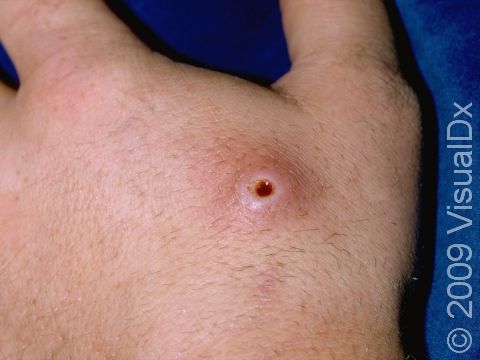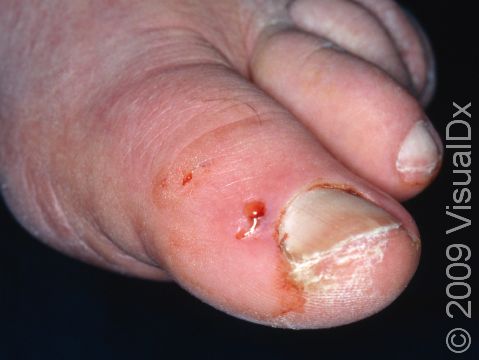Animal Bites, First Aid
Bites can be caused by wild animals and domestic animals (including humans), and they can range from mild to serious. It is important to assess both the severity of the bite as well as the risk for infection to determine the appropriate first aid and care.
Note: If the bite is from a wild animal or from a domestic animal whose immunization status is unknown, rabies is a concern. Seek prompt medical attention from a physician, even if the bite is mild and the skin barely broken. Immediate vaccination can prevent rabies from developing. While rabies in humans is rare, it is fatal.
First Aid Guide
Minor bite wounds are wounds where the skin is only slightly broken or when the bite is from a human (eg, child) or a domestic animal that is vaccinated against rabies.
First aid for minor bite wounds:
- Thoroughly wash the wound with soapy water.
- Apply an antibiotic cream (such as bacitracin) to the affected area.
- Cover the wound with a clean bandage.
- Watch for signs of infection (ie, the affected area is very red or warm to the touch, painful, oozing pus, or blood-filled).
- If the bite is on the hand or finger, call your doctor, as antibiotics are often given for bites in this area.
Severe bite wounds are wounds that are torn, deep (including deep punctures), or bleeding badly.
First aid for severe bite wounds:
- Attempt to stop the bleeding by applying pressure to the affected area with a clean, dry cloth.
- Seek medical assistance.
Note: If the bite is from a wild animal or from a domestic animal whose immunization status is unknown, rabies is a concern. Seek prompt medical attention from a physician, even if the bite is mild and the skin is barely broken. Immediate vaccination can prevent rabies from developing.
Rabies is more common in raccoons, skunks, bats, and foxes than in domestic cats and dogs; it can occur but is rare in wild or domestic rodents, such as rabbits, squirrels, and mice.
If you have been bitten by an animal and its status is unknown, it is best to notify police or animal control. DO NOT attempt to capture a potentially rabid animal yourself. Be ready to tell them what the animal looks like and where it is likely located so they can capture it and determine what steps to take next.
Who's At Risk?
Animal bites are extremely common and occur most frequently in children. Most animal bites come from domestic dogs. Cat bites are less common, but the risk of infection from a cat bite is higher than that from a dog bite.
Dog bites are largely preventable. (For more information, see the Centers for Disease Control Web site: http://www.cdc.gov/ncipc/duip/biteprevention.htm):
- Never leave infants or young children alone with any dog.
- Teach children basic safety around dogs:
- Do not approach an unfamiliar dog.
- Do not play with a dog unless supervised by an adult.
- Do not disturb a dog that is sleeping, eating, or caring for puppies.
- Do not pet a dog without allowing it to see and sniff you first.
- If approached or knocked down by an unfamiliar dog, remain motionless. (Do not run!)
- Avoid direct eye contact with a dog.
- If bitten, immediately report the bite to an adult.
Signs & Symptoms
Teeth marks are usually visible. Most bites occur on the fingers of the dominant hand. Children are also prone to bites in the head and neck area.
The wound will typically be a puncture wound with visible teeth marks, possibly quite deep in the skin and muscle.
Treatments
The physician may give a tetanus shot for any bite if the previous shot was more than 5 years ago. If infection occurs at the bite site, antibiotics will be given.
There is no cure for rabies once symptoms have developed. However, if you are promptly vaccinated after being exposed to the disease, you can develop immunity to it before symptoms develop. A physician will need to determine if treatment should be done once a bite occurs.
Visit Urgency
After a bite has occurred, watch for signs of infection (ie, the affected area is very red or warm to the touch, painful, oozing pus, or blood-filled). If suspected infection occurs, seek medical attention.
Any time you have been bitten by an animal, even if it broke the skin only slightly, it is important to consider the potential for rabies. If the animal is a domestic animal that is known to have been immunized for rabies, simply follow the above self-care measures and watch for potential infection. If the animal is wild or is domestic and the immunization status is unknown, seek prompt medical attention.
Last modified on October 6th, 2022 at 2:46 pm

Not sure what to look for?
Try our new Rash and Skin Condition Finder

